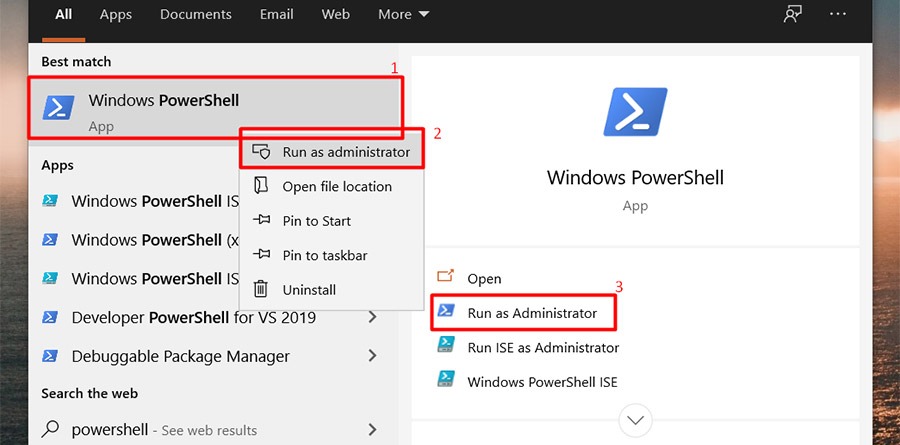
How to Properly Plant a Mango Seed for a Thriving Tree in 2025
The mango, often referred to as the "king of fruits," is not only beloved for its delicious flavor and nutritional value but also for its potential as an attractive addition to home gardens. If you're considering growing your own mango tree, understanding the best practices for planting mango seeds is essential to ensure a thriving tree. In this comprehensive guide, we’ll walk you through the process of how to plant a mango seed, offering expert tips on soil selection, seed preparation, and care techniques that will set up your future mango tree for success.
From knowing when to plant mango seeds to understanding the sunlight needs and watering schedules, this article covers it all. You will discover the best soil for mango seeds, how to nurture mango seedlings, and even tips on propagating mango seeds. Furthermore, we delve into challenges you may face in the process and how to overcome them, ensuring a fruitful gardening experience.

Essential Techniques for Mango Seed Preparation
Before diving into the actual planting process, you need to understand the critical steps involved in preparing your mango seed. Proper mango seed preparation is crucial for successful germination and eventual growth. Building on these fundamentals, let’s first explore the different aspects of mango seed preparation.
Choosing the Right Mango Seed
When starting your mango breeding journey, the first step is selecting a good seed. Opt for seeds from healthy, ripe mango fruits. They should be firm and free from any defects. Remember, the seed's quality directly impacts how well the mango tree will thrive.
Once you've chosen your seed, remove it from the fruit carefully. Ensure you handle it gently to maintain its integrity. After extraction, rinse the seed in clean water to remove any residual fruit pulp that could lead to mold growth.
Cleaning and Drying the Seed
After rinsing, it’s essential to dry the mango seed properly. Place it in a dry location for a couple of days. This drying process helps to prevent rot during the germination phase. Ensure the seed is completely dry before proceeding to the next step.
Peeling the Seed Coat
The hard outer shell of the seed can be challenging for the seedling to break through. Gently peel away a portion of the coat to encourage faster germination. However, be careful not to damage the softer inner seed. This technique significantly enhances your mango seed germination prospects.
The Mango Planting Process: Step-by-Step Guide
With your mango seed prepared, it's time to move on to the actual planting process. This crucial phase requires attention to various factors, such as soil quality, planting depth, and proper watering techniques. Moving forward, we'll delve into how to plant a mango seed effectively.
Selecting the Best Soil for Mango Seeds
One of the most important considerations when planting mango seeds is soil choice. The best soil for mango seeds is well-draining and nutrient-rich, ideally with a slightly acidic pH (around 6 to 7). Mixing regular potting soil with organic compost can provide the right balance of nutrients and drainage.
Using a container with drainage holes is crucial for preventing waterlogging, as mango seeds are sensitive to excess moisture. You can also consider using coconut coir as a medium, known for its excellent water retention and aeration properties.
Planting Mango Seeds Indoors
If you're in a cooler climate, planting mango seeds indoors can be an excellent alternative. Start by filling a pot with your chosen soil mixture and inserting the seed about one inch deep, with the pointed end facing down. This depth is ideal for ensuring the seed receives adequate warmth and moisture.
To create a suitable environment, place the pot in a location that receives plenty of sunlight, ideally 12-15 hours a day. If natural light is limited, consider using grow lights to supplement the light conditions. This will help mimic tropical conditions, encouraging healthy growth.

Caring for Your Mango Seedling
After planting your mango seed, the focus shifts to nurturing your seedling. The initial care for mango seeds involves monitoring the moisture levels and ensuring the seed receives enough light. Water the soil regularly but avoid soaking it. A consistent watering schedule is essential for healthy mango seedling growth.
Additionally, keep an eye out for pests and diseases that might affect your young mango plant. Inspect the leaves and stems frequently for any signs of trouble. Ensuring proper air circulation around your plants can help mitigate potential diseases.
Optimal Conditions for Mango Seed Germination
Now that you've successfully planted your mango seed, understanding the optimal conditions for germination is paramount. This knowledge will significantly contribute to the success of your mango tree. This naturally leads us to the ideal environmental conditions for mango seeds.
Temperature Requirements for Germination
Mango seeds thrive in warm temperatures. Generally, a temperature range of 70°F to 85°F (20°C to 30°C) is ideal for germination. To achieve this, you might need to use a heat mat if you’re planting in a cooler environment. The warmth encourages the seed to sprout and develop its roots faster.
Sunlight and Watering Needs
Alongside temperature, sunlight is a critical factor in germination. Mango seeds require bright, indirect sunlight for optimal growth. Overexposure to direct sunlight can scorch the young seedling, while too little light can slow growth significantly.
Watering should be done carefully. Utilize a regular watering schedule, ensuring the soil remains moist, but avoid over-watering: this is one of the most common challenges in planting mango seeds. An easy guideline to follow is to water when the top inch of soil feels dry to the touch.
Signs of Healthy Mango Seedling Growth
Recognizing the signs of healthy growth can help you assess your seedling’s progress. A promising mango seedling will exhibit vibrant green leaves, healthy stems, and a robust root system. Regular surveying of mango seed growth allows you to adjust care practices if necessary and encourages fruitful experiences in mango gardening.
Best Practices for Mango Tree Care
Caring for your growing mango tree involves more than just initial planting and germination. To ensure a healthy, productive tree, ongoing care is essential. With these basics established, let’s explore some comprehensive mango tree care practices.
Watering Techniques for Young Mango Trees
Once your mango seedling is established, developing a precise watering schedule becomes pivotal. Water your mango tree deeply but less frequently, encouraging strong root systems. During dry spells, your mango tree may require more frequent watering, but ensure the water drains well. Adopting efficient watering techniques is vital for sustainability.
Fertilizing Your Mango Seedlings
Proper fertilization contributes to the overall growth and yield of your mango tree. Organic fertilizers are generally recommended for mangoes as they enhance soil health while providing essential nutrients. Fertilize your seedlings every 4-6 weeks with a balanced fertilizer until they reach maturity, adjusting based on growth and environmental conditions.
Managing Pests Affecting Mango Plants
Pests and diseases can pose serious threats to mango trees. Regularly inspect your plants for signs of infestations, such as discoloration or wilting. Natural pest management methods, like introducing beneficial insects, can aid in controlling pests while maintaining a healthy garden ecosystem.
Common Challenges in Planting Mango Seeds
Despite the excitement of growing mangoes, challenges can arise during the process. Understanding the common pitfalls can help you prepare and adapt your strategies accordingly. Following this approach, we will explore the challenges when planting mango seeds.
Dealing with Mold and Rot
Mold and rot are primary concerns when planting mango seeds, especially if they’re overwatered or lack proper ventilation. To prevent these issues, ensure that your pots have appropriate drainage, and only water the seeds when necessary. Consider using fungicide if you encounter significant mold growth, ensuring it’s suitable for the environment.
Overcoming Germination Failures
Sometimes, seeds fail to germinate despite best efforts. Common reasons include inadequate moisture, incorrect temperature, or poor seed quality. Identifying these factors can help you improve future attempts at growing mango trees. Conducting a thorough check of your techniques can elevate your success rates.
Transitioning to Outdoor Growth
As your mango seedlings grow stronger, transitioning them outdoors becomes the final step. Gradually acclimate the young plants to outdoor conditions, starting with a few hours of sunlight at a time to avoid shock. Properly spaced planting ensures each mango tree has ample room to develop.
Q&A: Addressing Common Questions in Mango Planting
In this section, we address some common questions often posed by individuals seeking guidance on planting mango seeds successfully.
What is the best time to sow mango seeds?
The best time to sow mango seeds is during the warm season, typically in spring or early summer when temperatures consistently exceed 70°F (21°C). This timing aligns with the mango tree's natural growth cycle.
Can I grow mango trees in containers?
Absolutely! Growing mangoes in containers is an excellent option for limited spaces and can enhance yields with proper care. Use a large pot with good drainage, and be prepared to repot as the tree matures.
What nutrients do mango seedlings require?
Mango seedlings benefit from a balanced diet of nitrogen, phosphorus, and potassium, along with trace elements like magnesium and calcium. Using organic fertilizers can provide these nutrients sustainably.
How deep should I plant mango seeds?
Plant mango seeds about one inch deep in well-draining soil. This ensures sufficient warmth and moisture while allowing for a strong root system to develop.
What are the benefits of growing mangoes at home?
Home-grown mangoes offer numerous benefits, including reduced costs, improved flavor, and the satisfaction of nurturing your fruit. Additionally, they contribute to local biodiversity and support sustainable practices.